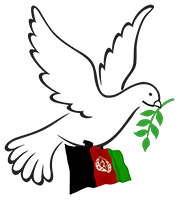Despite rising humanitarian needs, the reduction in aid has left millions of Afghan families facing severe economic and humanitarian challenges.
The World Food Programme (WFP) has once again raised concerns about the deteriorating humanitarian situation in Afghanistan.
The UN-affiliated organization states that this summer, ten million people in Afghanistan are in urgent need of food assistance; however, due to funding shortages, it can only support one million of them.
According to economic experts, the solution to reducing poverty in Afghanistan lies in fostering active relations with neighboring countries and making effective use of the country’s natural resources.
Abdul Zahoor Modabber, an economic affairs analyst, said: “To curb poverty, we must consider two key strategies: first, maintaining constructive and effective international relations; and second, utilizing both renewable and non-renewable natural and human resources efficiently. Therefore, with proper management, these resources must be used wisely and effectively.”
Following recent political developments, Afghanistan now tops the list of countries over which the global community has expressed deep humanitarian concerns.
Despite rising humanitarian needs, the reduction in aid has left millions of Afghan families facing severe economic and humanitarian challenges.
Mohammad Javid, a resident of Kabul, said: “If there were aid, we could manage. Even without work, we somehow got by. But when there is work, we don’t need aid. There are plenty of street carts, and they distribute cards to people but we don’t have any connections to get one.”
Meanwhile, the Ministry of Economy says it has launched programs to fight poverty and unemployment, which, if implemented, could help improve the overall situation.
Abdul Rahman Habib, spokesperson for the Ministry of Economy, stated: “Simply distributing food aid cannot fully address the needs of our people. Instead, lifting economic sanctions and international support for programs that strengthen families, create jobs, and enhance purchasing power can lead to real economic improvement.”
Unemployment, reduced foreign aid, natural disasters, and lack of access to adequate health and education services are among the key drivers of poverty and malnutrition in Afghanistan challenges that have forced families into displacement and pushed children into hard labor.
 Afghanistan Peace Campaign
Afghanistan Peace Campaign